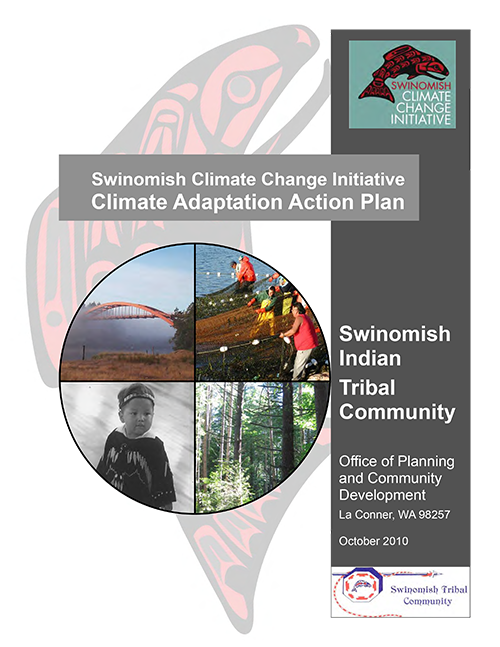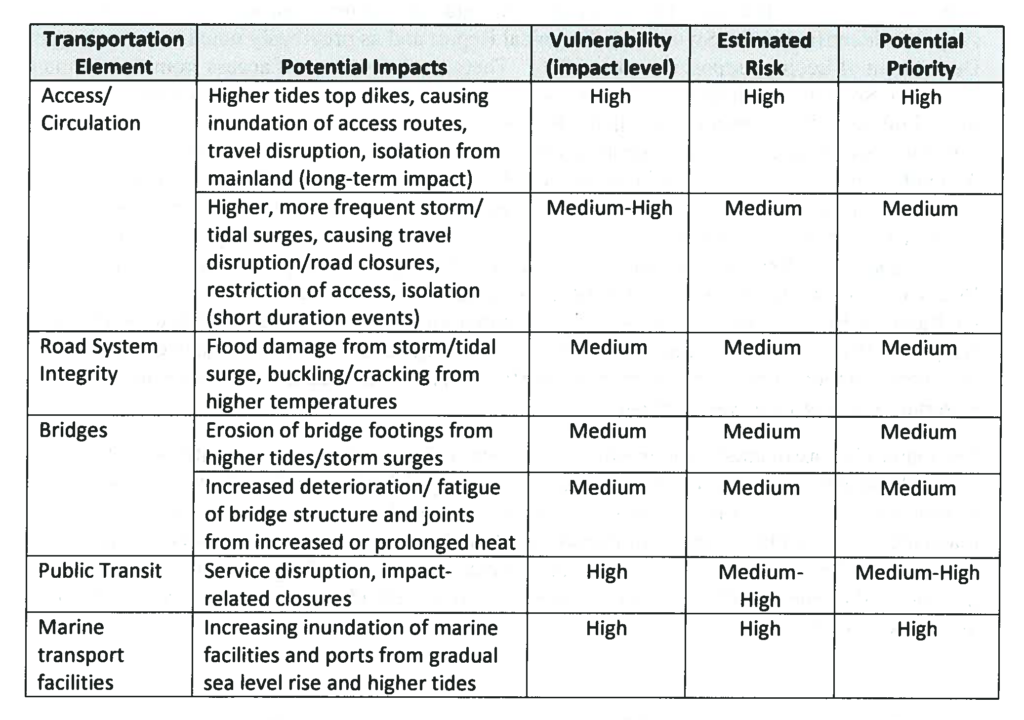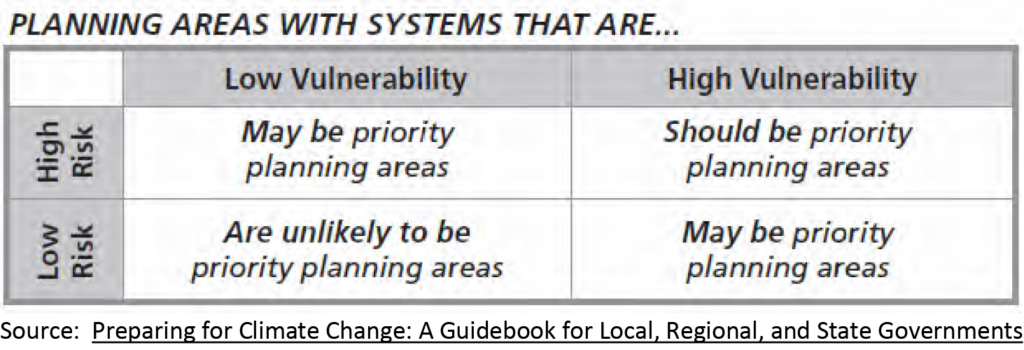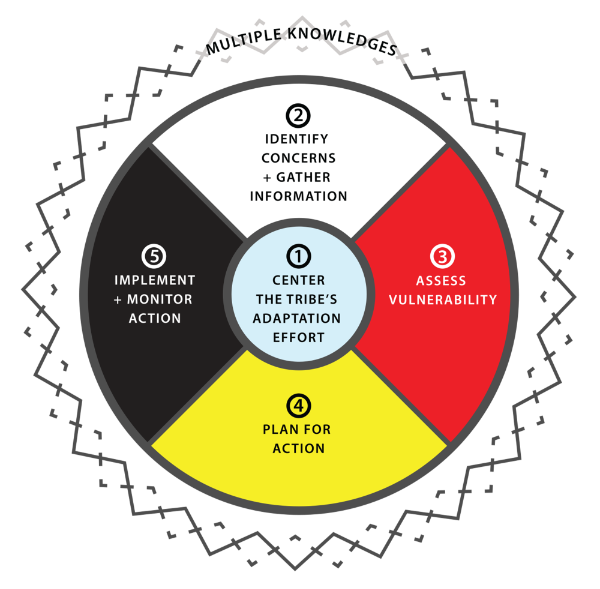Swinomish Indian Tribal Community
“The scientific evidence of climate change is increasingly abundant and convincing … Given the geographic location and characteristics of the Swinomish Indian Reservation, climate change impacts on the Reservation community are perceived to potentially be both significant and long-term.”
—Swinomish Climate Change Initiative Impact Assessment Technical Report

In 2010, the Swinomish Indian Tribal Community completed a two-year climate change vulnerability assessment and adaptation planning process that incorporated customized analysis of projected climate changes, a quantitative risk assessment, and selection of focus areas for action by sub-sector.[13]
Climate Exposure: The Tribe used a wide-ranging combination of global climate projections, reports, and, where possible, downscaled regional and local projections. To better assess the potential impacts of those projections, many exposures (such as sea level rise) were mapped onto risk zones for the reservation. Probability of impacts was assigned based on expert opinion at the time of the exposure assessment (Figure 8).

Vulnerability Assessment: The vulnerability assessment relied on identifying assets and resources that would be affected in different risk zones and specific local qualitative projections of impacts based on staff assessment of sensitivity and adaptive capacity.
Risk Analysis: The Swinomish Indian Tribal Community completed a risk assessment for each of the focus sectors and elements by combining the vulnerability (impact level) with the probability of impact. In this case, risk was the product of the vulnerability and probability of impact.
Selecting Planning Areas: The Tribe used the combination of the vulnerability and risk assessment results to identify “priority planning areas” and determine where to focus their adaptation action development (Figure 9).

